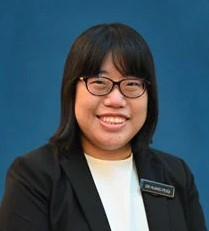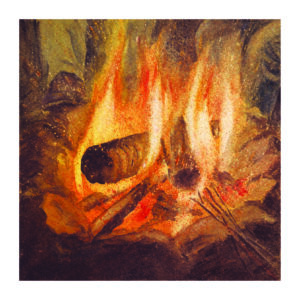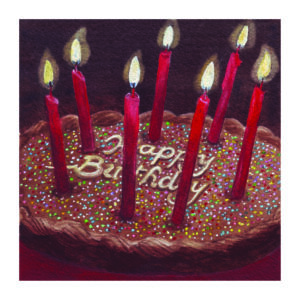
Healing Through Clay: How Art Therapy is Transforming Neonatal Care in Singapore
Posted: 15/08/2025In the sterile, high-stakes environment of a neonatal intensive care unit, where every second counts and emotions often run high, Dr Huang Peiqi, Consultant, Department of Neonatology, KK Women’s and Children’s Hospital, has found an unexpected source of healing: clay.
Dr Huang’s journey into the world of art therapy began not with a brush or a canvas, but with a grant from the SingHealth Duke-NUS Medical Humanities Institute (SDMHI). Inspired by the department’s annual theme, ‘Stronger Together’, she envisioned a pottery workshop that was both practical and symbolic, creating a space for growth and transformation.
‘Clay transforms through fire into something more resilient and beautiful,’ she explains. ‘I wanted the act of sculpting clay to symbolise my department being shaped by challenges and emerging stronger together.’
What started as a simple idea evolved into a powerful initiative when Dr Huang partnered with Phylaine, a senior art therapist and SDMHI faculty member. Together, they merged the therapeutic potential of art with the reflective practices of medical humanities, creating a three-part workshop that brought together doctors, nurses, and allied health professionals from the neonatal unit.
The workshop began with a reflective session using the Innovative Resources card set, Two Worlds. Participants were invited to contemplate the metaphor of ‘a vessel’—what do we hold and who holds us—and select cards that resonated with their personal and professional journeys.
‘The visual prompts made it easier for participants to be vulnerable and articulate their complex emotions,’ Dr. Huang says. ‘Even the simplest images held profound meaning.’
 One image of burning logs sparked two vastly different interpretations. For one participant, it symbolised passion and dedication; for another, it represented burnout and the need for self-care. Another card, showing an animal trapped in the rain, prompted reflections on the emotional isolation patients and families may feel, and the privilege of being able to offer comfort and safety.
One image of burning logs sparked two vastly different interpretations. For one participant, it symbolised passion and dedication; for another, it represented burnout and the need for self-care. Another card, showing an animal trapped in the rain, prompted reflections on the emotional isolation patients and families may feel, and the privilege of being able to offer comfort and safety.
Dr Huang herself was drawn to a picture of a clock—a poignant symbol in neonatal care.
‘We call out the time when a baby is born, and we call out the time a baby dies,’ she shares. ‘Time never stops, and it made me realise how important it is to cherish the time we have.’
Following the card reflections, participants sculpted clay vessels that represented themselves, culminating in an intimate sharing session. The experience was deeply moving, she notes.
‘Participants shared that discovering an additional facet of their colleagues’ lives helped them understand each other better and deepened a sense of connection,’ Dr Huang says. ‘Knowing others shared similar experiences helped them feel part of the same team.’
The workshop’s success lies not only in its emotional resonance but also in its alignment with the principles of medical humanities—a field that integrates arts and humanities into medical education and practice.
‘Medical humanities explore both the human experience of illness and our understanding of professional identity,’ Dr. Huang explains. ‘It helps trainees explore their emotions and form a sense of who they are as healthcare workers.’
KK Women’s and Children’s Hospital has long embraced reflective practice. From mandatory reflective writing during medical training to initiatives like MhOSAIC (Medical Humanities Offer Self-discovery through Arts for Improved Care), the hospital fosters a culture of introspection. During the COVID-19 pandemic, a film discussion program helped frontline doctors process the emotional toll of the crisis, sparking powerful conversations about resilience and purpose.
According to Dr Huang, the Two Worlds cards proved to be a particularly effective tool for facilitating these conversations.
‘They provided a safe entry point for difficult topics,’ Dr Huang says. ‘We didn’t have to ask uncomfortable questions—participants could use the cards to approach what affected them most.’
One card featuring a birthday cake prompted reflections on the uncertainty faced by parents in the neonatal unit—wondering if their child would live to see their first birthday. These organic,  heartfelt discussions helped participants reconnect with their ‘why’—the reason they chose healthcare in the first place.
heartfelt discussions helped participants reconnect with their ‘why’—the reason they chose healthcare in the first place.
‘The work we do can be heavy,’ Dr Huang acknowledges. ‘We can’t do it in isolation. These conversations help us realise we’re not alone in our challenges. They renew our sense of purpose and remind us to care for our own wellbeing.’
The feedback from the workshop has been overwhelmingly positive, and Dr Huang is exploring ways to expand the program within the hospital and across the SingHealth cluster.
‘At the end of the day, we are all human,’ she says. ‘We have deep needs—the desire to do our best for our patients, the desire for purpose, and the desire for connection. It’s important we don’t lose sight of that.’
In a field defined by precision and urgency, Dr Huang’s initiative offers a gentle reminder: healing isn’t just for patients. Sometimes, it begins with a lump of clay, a picture card, and a conversation.
by John Holton



Leave a Reply